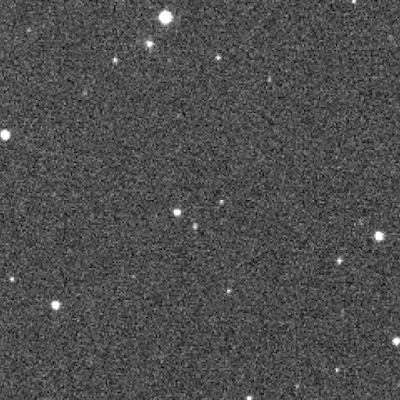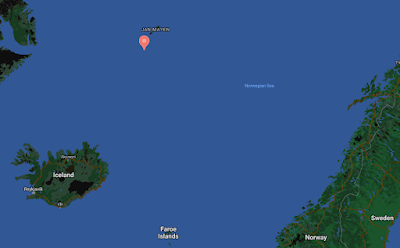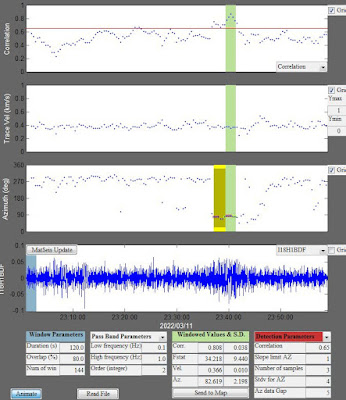CBET 5111 & MPEC 2022-F13, issued on 2022, March 21, announce the discovery of an apparently asteroidal object (magnitude ~17) discovered on CCD images taken on Mar. 2 UT with a 1.2-m f/2.4 Schmidt telescope at Palomar in the course of the "Zwicky Transient Facility" (ZTF) survey (MPC code I41). Subsequently, it has been found to show cometary appearance by CCD astrometrists elsewhere. The new comet has been designated C/2022 E3 (ZTF).
Stacking of 12 unfiltered exposures, 120 seconds each, obtained remotely on 2022, March 20.4 from X02 (Telescope Live, Chile) through a 0.61-m f/6.5 astrograph + CCD, shows that this object is a comet with a compact coma about 9" arcsecond in diameter (Observers E. Guido, M. Rocchetto, E. Bryssinck, G. Milani, G. Savini, A. Valvasori).
Our confirmation image (click on the images for a bigger version; made with TYCHO software by D. Parrott)
MPEC 2022-F13 assigns the following orbital elements to comet C/2022 E3 (ZTF): T 2023 Jan. 13.18; e= 0.99; Peri. = 145.77; q = 1.11 ; Incl.= 109.09
 |
| Credit: MPC |
According to CBET 5111: "These preliminary elements indicate that the comet will pass 0.28 AU from the earth in early Feb. 2023, when the comet may be near total visual magnitude 6; these also suggest that the comet passed about 1.18 AU from Saturn in 2020 May and about 3.07 AU from Jupiter in 2021 April." Below you can see a graph generated using the software Orbitas and showing the predicted magnitude (in red) versus its elongation from the Sun. As always with comets, the future magnitudes reported here are only indicative.
by Ernesto Guido










